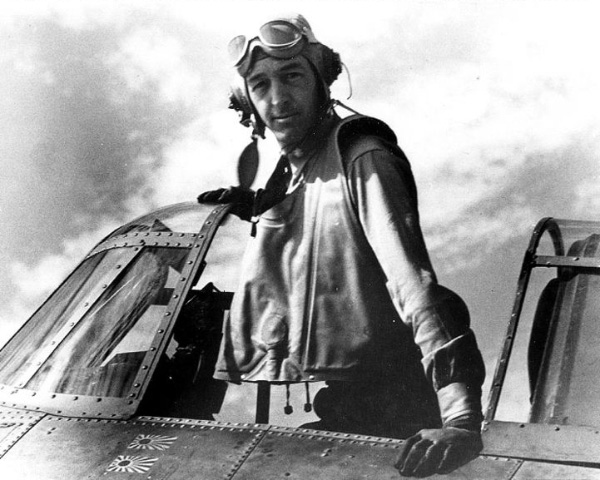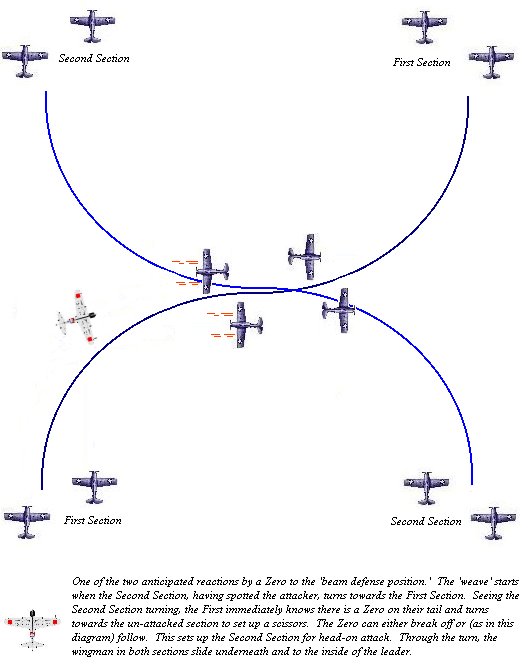
|
John Smith "Jimmy" Thach | ||
|---|---|---|---|
| Home Page | Airmen Index | ||

|
|||
|
Eager to abandon the three-plane formation, John Thach began developing a German style two-plane formation, that would provide a better defense against superior Japanese fighters. Two-plane units would be spaced between three to four hundred yards apart. If one unit was attacked, it would turn towards a second adjacent unit, which in-turn would break towards the threatened unit. This would draw the attacking aircraft into the line of fire of the second unit almost head-on.1
Thach called this the "Beam Defense Maneuver", but it was mostly referred to as the "Thach Weave". It was one of the most strategic air defensive maneuvers of the war, particularly for the pilots who flew Grumman F4F Wildcats, that were outclassed by their main opponent, the Mitsubishi Zero. This tactic greatly benefited the Americans pilots. Since they developed the maneuver, they were more adept at deflection shots, and many of the encounters were full deflection shots. | |||

| |||
End Notes:
| 1. Norman Franks. Aircraft Versus Aircraft. The Illustrated Story of Fighter Pilot Combat from 1914 to the Present Day. (New York: Barnes & Noble Books. 1998.) 116. |
Return to Airmen Index
© The Aviation History On-Line Museum.
All rights reserved.
March 9, 2010. Updated August 9, 2024.